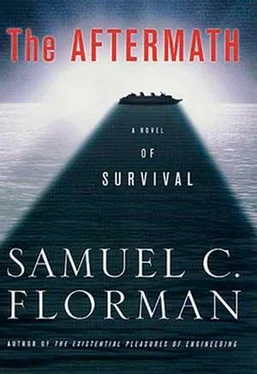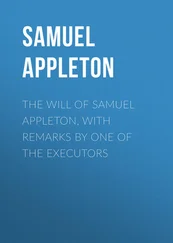Samuel Florman - The Aftermath
Здесь есть возможность читать онлайн «Samuel Florman - The Aftermath» весь текст электронной книги совершенно бесплатно (целиком полную версию без сокращений). В некоторых случаях можно слушать аудио, скачать через торрент в формате fb2 и присутствует краткое содержание. Город: New York, Год выпуска: 2001, ISBN: 2001, Издательство: Thomas Dunne books, Жанр: sf_postapocalyptic, на английском языке. Описание произведения, (предисловие) а так же отзывы посетителей доступны на портале библиотеки ЛибКат.
- Название:The Aftermath
- Автор:
- Издательство:Thomas Dunne books
- Жанр:
- Год:2001
- Город:New York
- ISBN:0-312-26652-9
- Рейтинг книги:5 / 5. Голосов: 1
-
Избранное:Добавить в избранное
- Отзывы:
-
Ваша оценка:
- 100
- 1
- 2
- 3
- 4
- 5
The Aftermath: краткое содержание, описание и аннотация
Предлагаем к чтению аннотацию, описание, краткое содержание или предисловие (зависит от того, что написал сам автор книги «The Aftermath»). Если вы не нашли необходимую информацию о книге — напишите в комментариях, мы постараемся отыскать её.
The Aftermath — читать онлайн бесплатно полную книгу (весь текст) целиком
Ниже представлен текст книги, разбитый по страницам. Система сохранения места последней прочитанной страницы, позволяет с удобством читать онлайн бесплатно книгу «The Aftermath», без необходимости каждый раз заново искать на чём Вы остановились. Поставьте закладку, и сможете в любой момент перейти на страницу, на которой закончили чтение.
Интервал:
Закладка:
“We know a lot more about building good roads and maintaining them than did those folks in early days,” Alf Richards reflected. “If they had had decent roads, they wouldn’t have bothered building all those canals.”
But roads were not the main problem. Nor were oxen, of whom an adequate number had survived. The desperate need was for vehicles—wagons, trams, carriages—anything with wheels that could carry sizable loads. Very few such conveyances had survived the Event.
On an emergency basis, critical materials were being conveyed on patched-together carts, makeshift sleds, the backs of animals, and even on the backs, shoulders, and heads of human bearers. The Planning Subcommittee decided to endorse this spontaneous arrangement, as they had with the couriers, by designating one hundred individuals as transporters of material. They were to be known officially as the Teamsters. The subcommittee anticipated that, as more wheeled vehicles became available, these workers would indeed become drivers, transporting freight to every corner of a growing realm.
“I can hardly wait for the next Jimmy Hoffa to rise up among us,” Richards commented in a momentary lapse into bitter humor.
Alf then directed the discussion into a historical mode. This was strange territory for the self-confident hardhat, who for the moment sounded positively wistful. “Dammit. We need a lot of wagons, and I suggest we allocate one hundred workers—no, make that two hundred—to produce them. But where in the world are we going to find wagon builders?”
More generally, the problem was: how were the skills of yesteryear to be recaptured?
For example: candles. As the batteries expired, making lanterns and flashlights useless, the humble candle suddenly became an object of great importance. One of the first requests made by Captain Nordstrom to the Ulundi Indaba was to send a supply of tallow—rendered animal fat, a material used at least five thousand years ago in making this precious light-giving device. The three women in Engineering Village who knew exactly how to go about dipping candles, and also making them in molds, were among the earliest community heroes.
In the quest for pioneer skills, help came providentially from three unexpected sources. First, there were a number of proficient hobbyists among both Inlanders and Outlanders. They provided precious expertise in glassblowing, papermaking, blacksmithing, and candlemaking.
The second valuable resource was Millie Fox and her Peace Corps experience. Millie had intended to chair a session on “Intermediate Technology” as the most desirable way to achieve progress in underdeveloped nations. In addition to useful technical literature, she had brought along several young engineers with field experience in just such conditions as those the survivors now faced. They provided an excellent counterbalance to the high-tech professionals who were learning the hard way what it meant to cope with Stone Age realities.
The third resource was a contingent of specialists from “living museums,” including those of Sturbridge, Massachusetts; Shelburne, Vermont; Old Salem, North Carolina; and Williamsburg, Virginia. In those institutions the old trades had been kept alive by actual practice. Wilson Hardy, Jr., had urged his father to incorporate the history of technology into his plans for the seminar; the elder Hardy had accomplished this by inviting museum people in addition to several academic historians. And so it happened that from the Queen of Africa community there were several talented blacksmiths, millers, printers, and weavers, along with excellent plans and specifications for forges, waterwheels, mills, printing presses, and various workshops of eighteenth-century America.
Equally precious was the collection of prints and photographs brought along by another museum invitee, Foster Tillinghast of the National Museum of the Smithsonian Institution. Pumps, plows, threshers, reapers, spinning wheels, forges, steam engines, sawmills, power looms, cotton gins, clockworks, lathes, rifles, sewing machines, telegraphs… the whole cavalcade of American technology laid out to be seen, admired—and copied if so desired. There were also some historical museums in KwaZulu Natal that contained valuable information on the early technology of the native Africans, as well as the pioneer Boers.
This treasure trove was so remarkably comprehensive that it even evoked a backlash of mild hostility.
“I hope that we’re not planning merely to repeat history,” said Tom Swift, one of Hardy Junior’s Focus Group. He looked askance at the pictures and records that so excited the young historian.
“Do better if you can, Tom,” Wil Hardy said. “More power to you. But I’m mighty happy that we have the genius of the past to fall back on.” He promptly dubbed the museum professionals and the workers skilled in the pioneer crafts the “Museum Mavens.”
Once the Planning Subcommittee got to talking about these technologies of earlier times, several members began to voice new misgivings.
“You know,” Harish Kahar said, “we’ve been arbitrarily assigning hundreds of workers to one task or another, assuming that centralized factories are the way to go. But wouldn’t some of this work be better performed in a cottage industry setting?”
Millie Fox also challenged the group to think seriously about technological work that could be accomplished in the home, or the tribal compound. “Remember,” she said, “in Colonial America, before the rise of factories, the farmer-artisan played a prominent role. Many farm families made their own tools, furniture, clothing, and processed foods. Beyond this, some functioned as part-time craftsmen, providing trade goods or services for the market. Hats, shoes, and pottery, for example, were products of an active hearthside production. Many country gristmills were run by farmers, operated only when customers brought in grain to be ground. The same was true of sawmills. At least this is how it was before the idea of the centrally located factory took hold.”
“Starting in Pawtucket, Rhode Island, in 1793.” Wilson Hardy, Jr., the enthusiastic historian, could not restrain himself.
Such debates lasted well into the evenings. Decisions sometimes entailed a choice between all-out industrial development and cottage industry manufacture, and sometimes a mix of the two. The “small is beautiful” approach won out with textiles—which young Hardy found ironic, since in the Industrial Revolution that was one of the first technologies to which the factory system was applied.
Little by little, the Planning Subcommittee covered the main areas of technological activity, allocating human and physical resources to each. Several times it was suggested that the use of metals be considered; but on each occasion Ichiro Nagasaka demurred, recommending that this topic—which he considered to be the capstone of the entire enterprise—be left until last.
After the sixth day of meetings there was some talk about taking a break, a Sabbath of sorts, but Alf Richards ruled against it. “God might have rested on the seventh day,” he said, “but He saw everything that He had made and beheld that it was good. The Joint Planning Subcommittee can hardly make such a claim.”
For example, health care was one key field that had not yet been addressed. Medical groups had been working since the very first days of crisis, but it was important that the subcommittee formally endorse these activities and provide necessary support. The health care community consisted of doctors and other medical professionals, both Inlanders and Outlanders, numbering one hundred twenty. They had established a hospital center in Ulundi, and clinics in several other small population centers, as well as Engineering Village. The assembled pool of talent was impressive by any stan dard; but the shortage of equipment and drugs was worrisome.
Читать дальшеИнтервал:
Закладка:
Похожие книги на «The Aftermath»
Представляем Вашему вниманию похожие книги на «The Aftermath» списком для выбора. Мы отобрали схожую по названию и смыслу литературу в надежде предоставить читателям больше вариантов отыскать новые, интересные, ещё непрочитанные произведения.
Обсуждение, отзывы о книге «The Aftermath» и просто собственные мнения читателей. Оставьте ваши комментарии, напишите, что Вы думаете о произведении, его смысле или главных героях. Укажите что конкретно понравилось, а что нет, и почему Вы так считаете.












